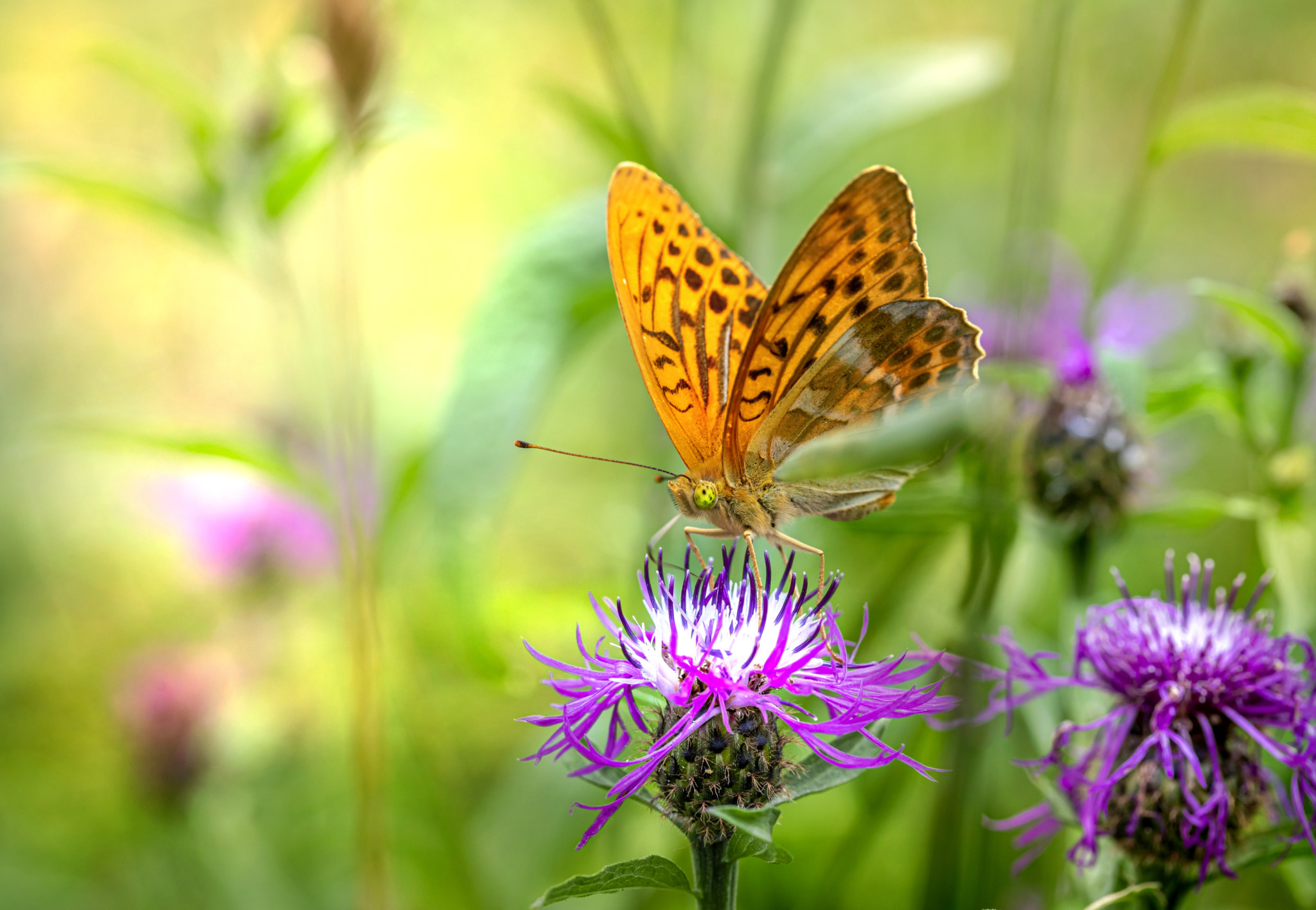The Silver-washed Fritillary (Argynnis paphia) is a striking butterfly species found in Europe and parts of Asia. Here are some key characteristics and information about this beautiful insect:
- Appearance: The Silver-washed Fritillary is a large and colorful butterfly with wingspan ranging from 54 to 70 mm in males and 64 to 74 mm in females. The upper side of its wings is primarily orange with black markings and streaks. The underside is a pale greenish-yellow with silver streaks, giving the butterfly its name.
- Habitat: These butterflies prefer woodland habitats, particularly open woodlands, forest edges, and clearings. They require areas where their larval host plants, mainly violets (Viola species), are abundant.
- Lifecycle: The Silver-washed Fritillary undergoes complete metamorphosis, with four distinct stages: egg, larva (caterpillar), pupa (chrysalis), and adult butterfly. The female lays eggs on or near the host plants. After hatching, the caterpillars feed on the leaves of the host plants. Once fully grown, the caterpillar pupates, forming a chrysalis from which the adult butterfly emerges.
- Behavior: Adult Silver-washed Fritillaries feed on the nectar of various flowers, favoring plants like thistles, brambles, and knapweeds. Males are often seen patrolling territories in search of females. They are strong and fast flyers, capable of covering considerable distances.
- Distribution: The Silver-washed Fritillary is widespread across Europe, ranging from the British Isles in the west to Japan in the east. It is also found in parts of northern Africa.
- Conservation: In some regions, habitat loss due to deforestation and agricultural intensification has led to declines in Silver-washed Fritillary populations. Conservation efforts focus on preserving and restoring suitable woodland habitats and promoting sustainable land management practices.
- Cultural Significance: As a beautiful and charismatic species, the Silver-washed Fritillary holds cultural significance in many areas where it occurs. It is often celebrated in art, literature, and folklore as a symbol of beauty and vitality.
Overall, the Silver-washed Fritillary is an iconic butterfly species known for its striking appearance and association with woodland habitats. Efforts to conserve its habitats are essential for ensuring the survival of this magnificent insect.
Visited 200 times, 27 visit(s) today
Views: 445
Subscribe to the newsletter:
